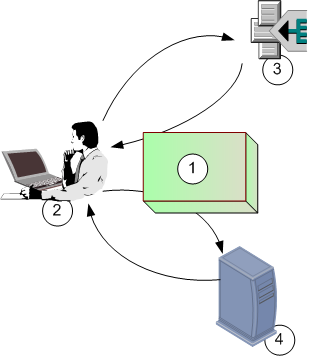


When an Endpoint Security client connects to the Endpoint Security Management Server, an authentication process identifies the endpoint client and the user currently working on that computer.
The system can function in different modes:
This option is only available for endpoints that are part of Active Directory.

The authentication process:
The default behavior after Security Management Server installation is Unauthenticated mode. It is recommended that you use this mode while you are evaluating Endpoint Security, in a lab environment, and that you change to Strong Authentication just before moving to a production environment. It is not recommended to continue to work in Unauthenticated mode after moving to production in a live environment.
|
Important - If you use Active Directory Authentication, Full Disk Encryption and Media Encryption & Port Protection are only supported on endpoint computers that are part of Active Directory. If you have endpoint computers in your environment that are not part of Active Directory, Full Disk Encryption and Media Encryption & Port Protection will not work on them. |
When you are ready to move to production and to set up Strong Authentication follow this process. Do not set up authentication before you are ready to move to production, and do not leave your production environment without authentication.
To efficiently move to Strong Authentication:
The server communicates to clients that they now work in Authenticated mode.